By Sonia Fernández Pan | Images courtesy the artist
We tend to think of cities as more or less ordered compositions of buildings, roads, streets, squares, bridges, tunnels, roundabouts and parks. The last of these seem to tell us that the traditional division between culture and nature has been another of our many epistemological fictions. The other elements, in contrast, help us to carry on believing that the world belongs to us. A city is an ideological organism and the whole planet seems to have turned into one great city in which matter, objects and people are constantly in motion. This hierarchical synopsis of elements also sees cities as structures whose main function is human transit through the various bodies that make it possible. But there are other material configurations of cities — and of the world — that cannot be reduced to human pragmatism. That exist in spite of it. Just as modes of transit exist that alter the pre-established spatial functionality of cities and the places in them and that occur in residual spaces. Journeys to nowhere in particular. A kind of transit that offers a certain resistance to converting space into a commodity, by turning it primarily into experience. The experience of a type of movement that is conscious of the materiality of cities. An experience that sees public places and buildings as objects in space. As transitable. This new mode of transit is based on rhythm from the noises and silences created by bodies coming into contact with each other. Like wood dragged over a metal bar until it falls onto a cement floor without actually touching it. Materials that live a few inches apart but hardly ever brush against each other.
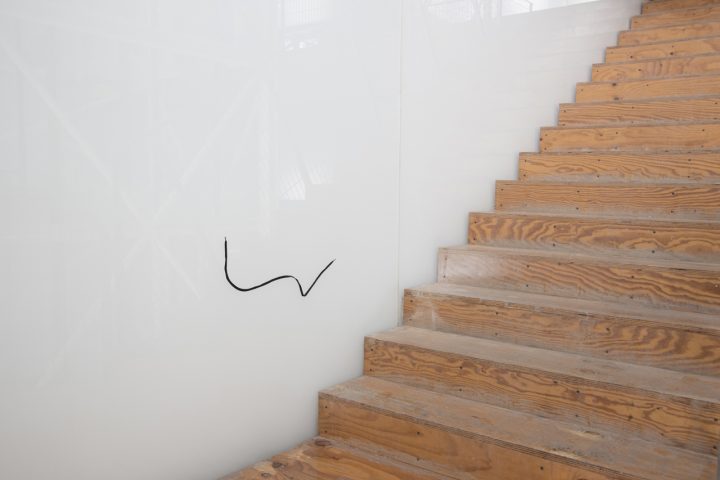
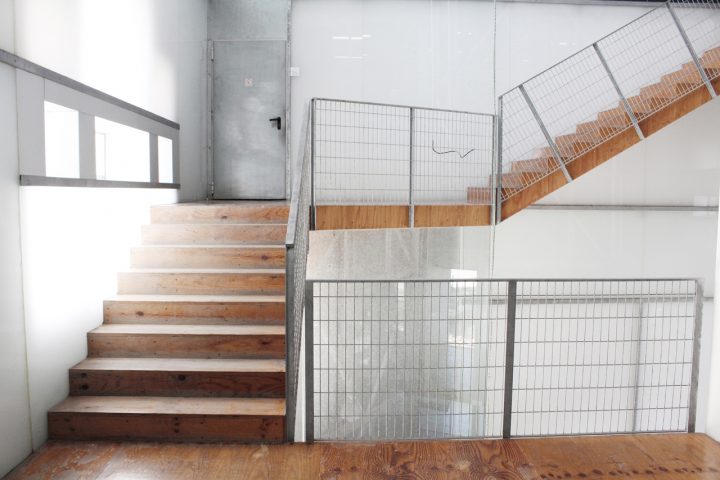
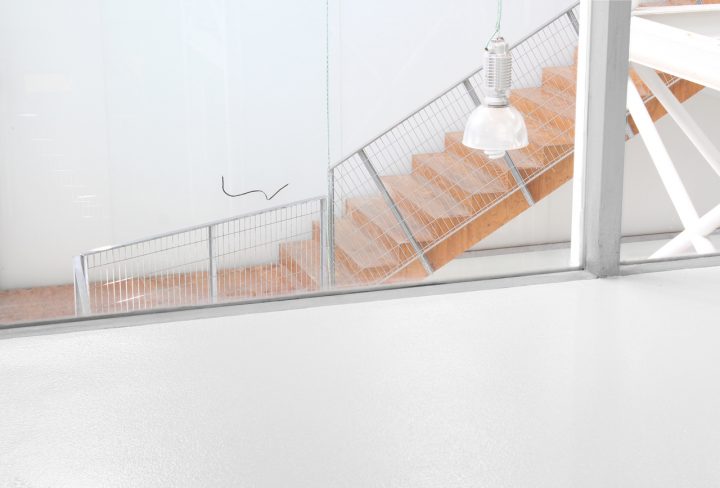
One of the things you learn by using a bicycle every day is that there are objects and materials that we do not otherwise perceive. They acquire a presence because they impede our movement. Streets are never empty, but we tend to describe them as such when there is no one walking along them. This is an anthropocentric value judgement. Indeed, we are only conscious of the existence — and the abundance — of those secondary elements when we bump into them. Or when they get in our way. When they are a nuisance. When they become obstacles to us. The staple that cleverly manages to get stuck to our wheel, for example, and is driven right in until it lets all the air out, moving from one place to another by taking advantage of that momentary contact between two highly compatible surfaces. However tough tyres may be, they exist in a permanent state of danger. There is also broken glass, unexpectedly scattered over the road, which we are rarely able to negotiate successfully so as to continue unscathed on our way to a destination that never signifies the end of the journey. But in any case, even though we insist on calling it broken glass, it is not broken. What is broken is the bottle it usually comes from. Once the bottle is broken it ceases to exist as such. It ceases to be a recognisable object and turns into matter in the form of much smaller objects. Matter often becomes present, unavoidable, through a change of scale, place or position. In the same way, objects become more present when they lose their original function.
“A kind of transit that offers a certain resistance to converting space into a commodity, by turning it primarily into experience. The experience of a type of movement that is conscious of the materiality of cities.”
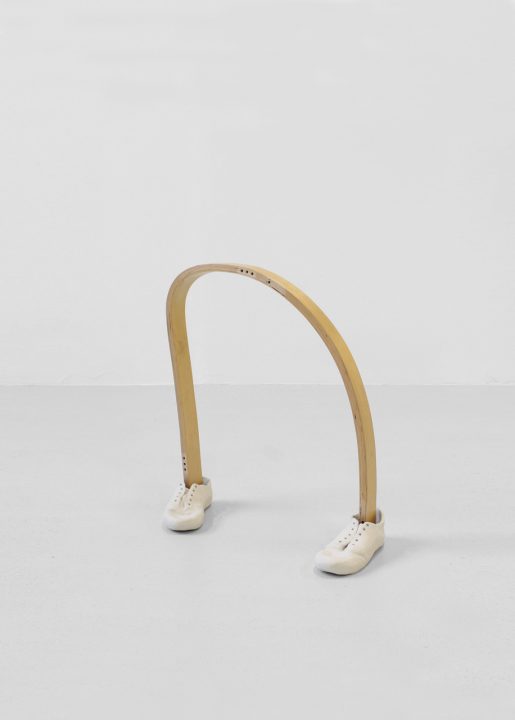
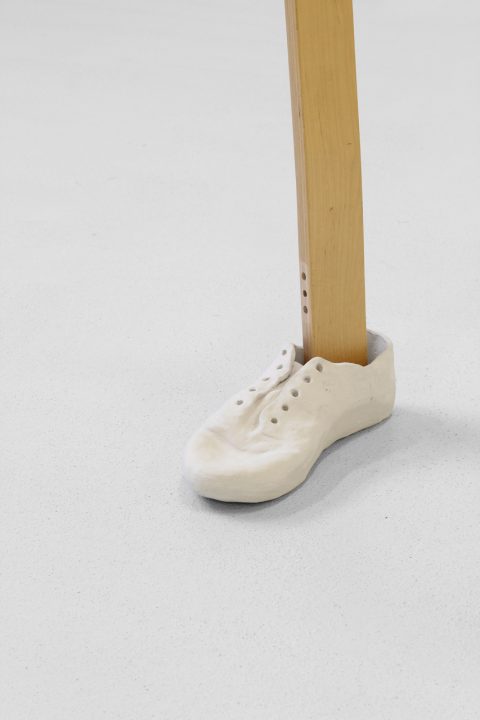
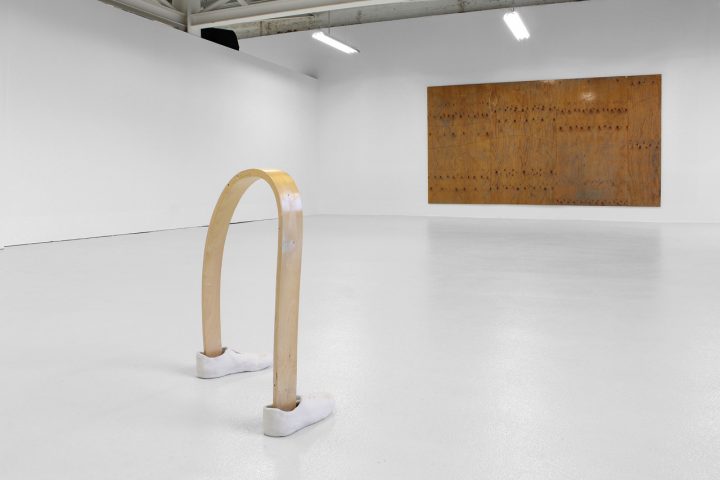
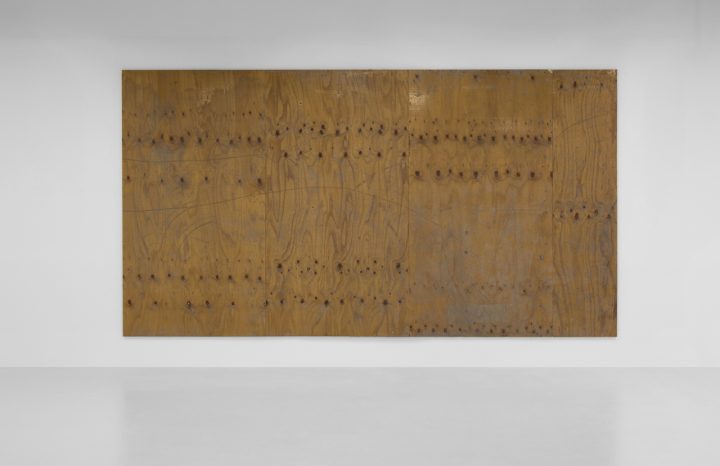
The streets are full of a vast quantity of plastic or cardboard packaging. Its life is inescapably linked to the movement of the things it contains, and it turns into waste in a matter of minutes. It is still the same packaging, except that it has been crushed over and over again by other objects in transit passing over it. Like a bad joke, we might wonder what the packaging says to the umpteenth wheel that callously flattens it. Even in the material environment there are class privileges, and some elements have a greater right to exist than others. That is why we use the concept of waste to distinguish them from the rest. But what would a world built on the primacy of waste be like? It could happen, through a revolution of things. Historical materialism in the literal sense of the term. A material uprising more radical than that of communist objects themselves, which were conceived on the basis of the possibility of fragmentation: part of an object that becomes obsolete and prolongs its life by being incorporated later into another. Like a lace in an old pair of shoes that moves on to a new pair when the first ones are worn beyond repair. But in an uprising of things, the lace would break away from the shoes, demanding an independent existence. If objects had feelings, perhaps they might miss each other after a while. Do laces also work in pairs, like shoes? Is there a left lace and a right one? Maybe not; perhaps nostalgia and spatial categories only apply to humans. Or perhaps a lace stuck to a wall, like a piece of overcooked spaghetti, feels fulfilled by drawing a shape that is not intended as a drawing of anything.
“But what would a world built on the primacy of waste be like? It could happen, through a revolution of things. Historical materialism in the literal sense of the term. A material uprising more radical than that of communist objects themselves, which were conceived on the basis of the possibility of fragmentation.”
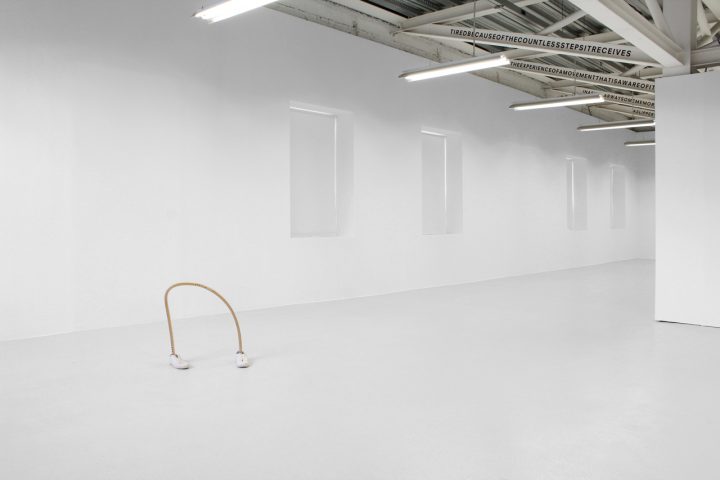
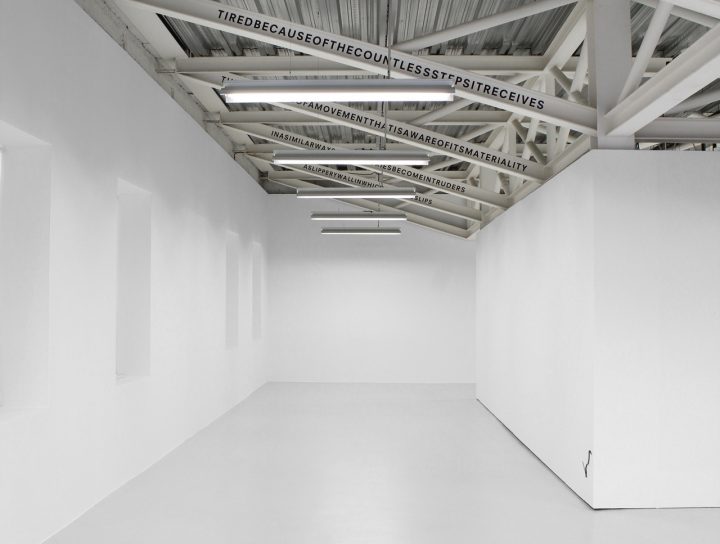
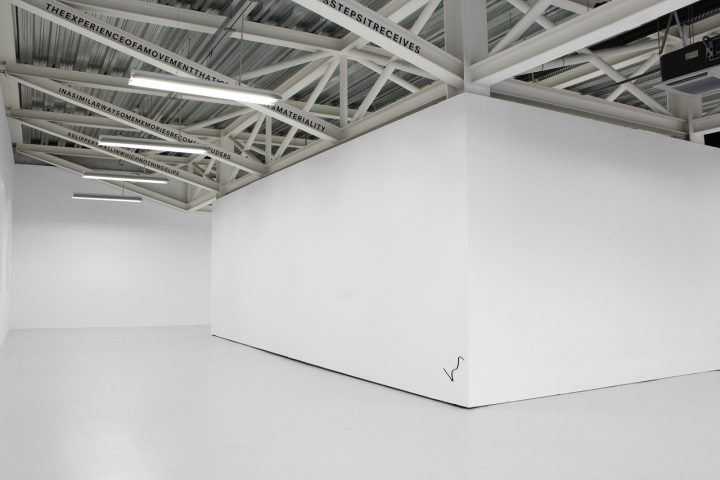
Re-using matter though various displacements of objects is still one of the constant elements of art. As is subverting the original function of many objects, materials and places. Using spaces that were not designed to have anything put in them. The logic of the white cube often take precedence over the things it contains. But it is an ambiguous logic. An intrinsic part of it is the fact that it is altered. Though not without certain difficulties. The white cube was made for seeing, not for touching. So what happens when it contains materials that resist the privilege of the gaze? When there is a wall that has nothing hanging from it but is totally occupied by something? Or when things are located far above the human gaze? Like the city, the white cube is also made of residual spaces. Like a car park with no cars, when it seems to be empty the white cube becomes a form. It is an object in itself. A manifestation of context.
How is it possible to introduce transit into a place that seems to have been made to interrupt the life of objects and matter? To introduce the weariness of wood from the countless steps it receives. Or the memory of the places that lie behind those steps. The possibility of imagining a city of wood through a section of floor hanging from a wall. A handrail a few centimetres from the floor. A protective barrier that becomes addicted to risk. A wooden arch separated from the object it was created for. A slippery wall in which nothing slips. A possible history of transit through its impact on materials and on the memory of objects. The sound of the blow. The moving footprint. The same mark on different surfaces.
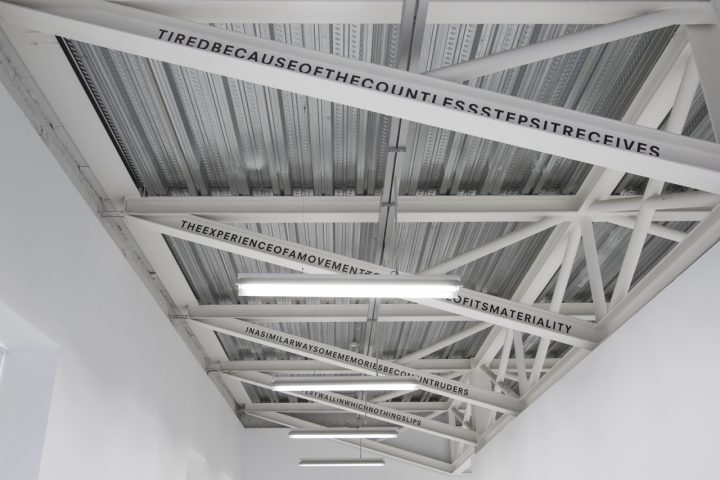
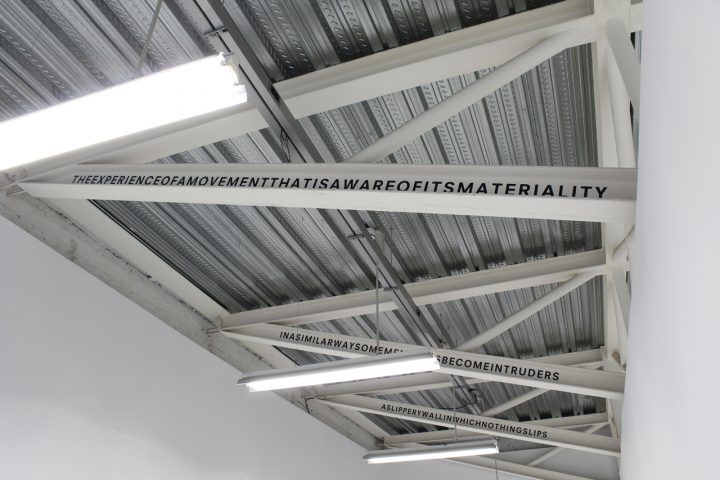
Waste is something that arises from the movement from care to abandonment. It is an alteration of the focus of attention. Waste is the material evidence of a lack of interest and an abdication. A human lack of interest is compounded by the abdication of the object, which refuses or is unable to be what is was before. An object that is no use (to us) and whose existence gets in the way because it occupies a space we do not want it to occupy. It inhabits a space that is suddenly denied it. Similarly, some memories turn into intruders. Memory, however, is not something that is located in a specific place. It is a flux activated through things, situations, places or people. It exists because of the material need for memories. When things are lost, so is our ability to think through them. Memories are lodged potentially in objects. Might memory be a layer of wax, capable of covering everything but invisible to the gaze? Does the fact that we cannot see a material make it invisible? Are materials invisible to each other? Are they aware of their shared existence?
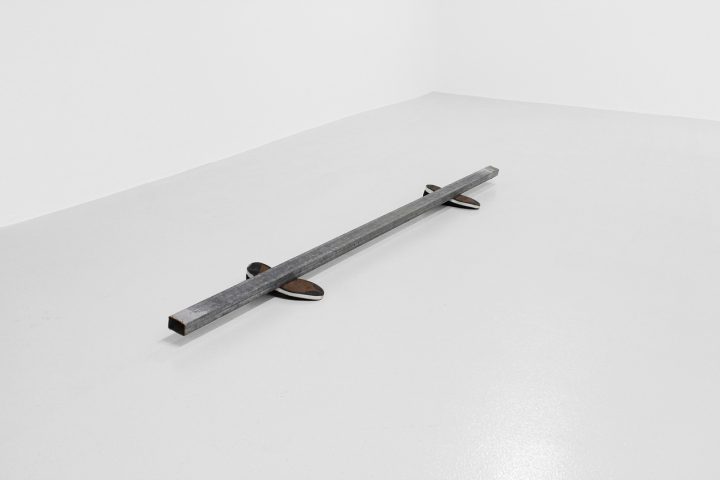
The archive has conditioned our notion of memory, turning it almost into a space. It is inscribed in things. It is one more layer of meaning in them, a potentially infinite layer. But the fact that something is documentary does not necessarily imply that it is a document. The fact that our memories are potentially vested in objects does not mean that the objects belong to us. They may even have a memory of their own, independent of ours. Or an emotional dimension between them beyond the one we have with them. What is more, it could be that we are the ones who belong to objects. We live and move because of them. They are one of the reasons for our permanent state of transit. Acquiring them, establishing an emotional or functional connection with them, getting rid of them, perhaps missing them. But again this is an anthropocentric perspective which endows things with meaning when they have a direct relationship with us. And it also attributes greater meaning to objects that do not accompany us in our daily transit and seem capable of having a life independent of ours. They are objects which hardly move and their stasis lends a certain stability to our nomadic condition. Because with every movement the danger of erasing memory arises: the possibility that a new memory will replace the previous one, and so on. Where is memory when things never stop moving? What is the memory of transit? Can objects be nomadic? One of the effects of habit is that things lose their value. When this happens, one possible strategy is to change their function, to signify things not so much by what they are but by what they may come to be.
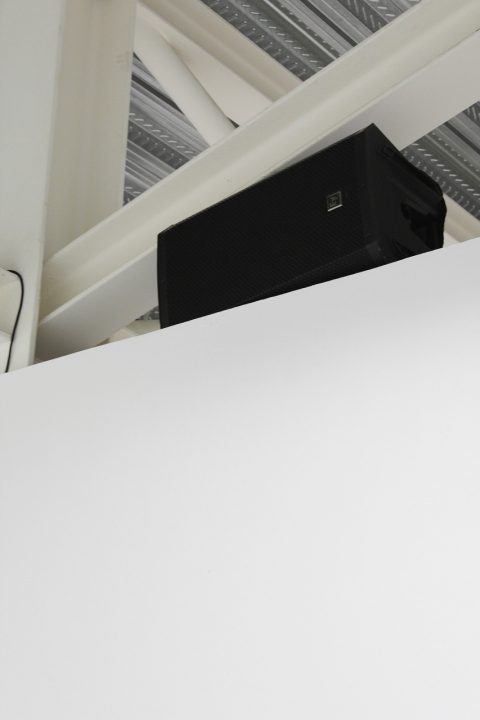
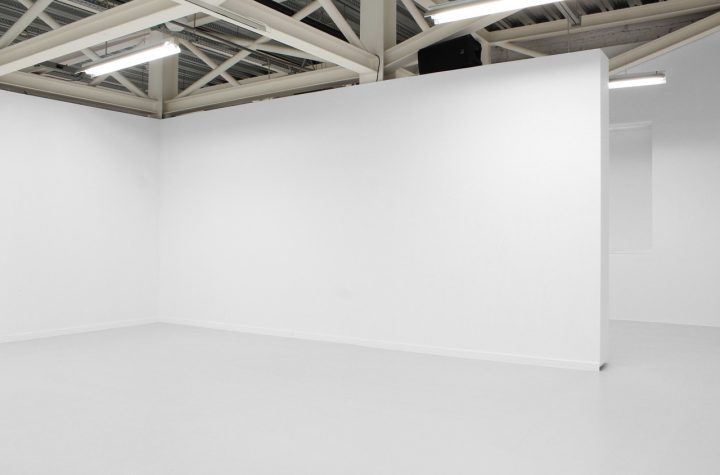
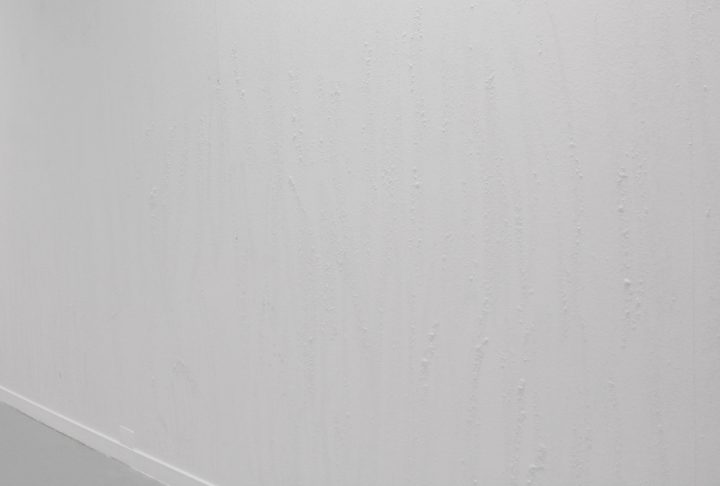
“The archive has conditioned our notion of memory, turning it almost into a space. It is inscribed in things. It is one more layer of meaning in them, a potentially infinite layer. But the fact that something is documentary does not necessarily imply that it is a document. The fact that our memories are potentially vested in objects does not mean that the objects belong to us.”
What is the memory of a shoe? How many memories does it contain? How many surfaces is it capable of coming into contact with? How many places does it experience during its lifetime? How many lives does it know? How many different materials does a single shoe touch in the course of a day? We could think of human beings as the mammals that use shoes to walk. And of shoes as the objects that know us best, or as those we have made indispensable for our transit through the city. However, there are also shoes that have lost track of their original function, either because their use is still in a state of potentiality, or because they will never again be used for walking. The object as a trail, and not the trail as the effect of that same object on matter. What is the function of a shoe abandoned in the street? Does it feel abandoned? And what about a pile of shoes in a box? Do they feel shut in? Why is a shoe that is no use for walking still a shoe? What is the essence of things if their meaning comes from the effects they produce on the world? Does it lie in form? In materials? Could there be an ontology that has no need of an essence of things?
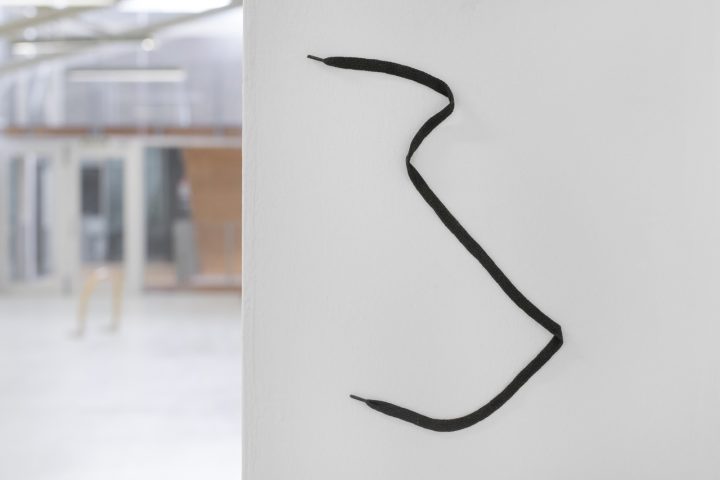
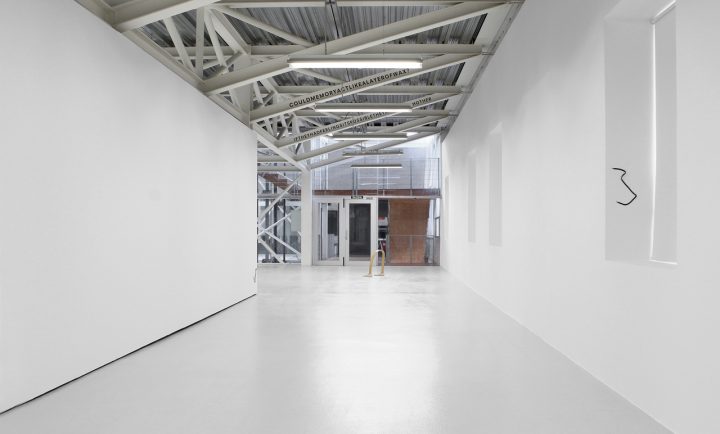
Objects produce history. They are an involuntary technology for producing time. In our historical understanding, form carries more weight than materials when it comes to determining the origin of things. Is it possible to think of history from a material perspective? To think of the life of shoes in terms of the materials they are made of, rather than when they were made or the social value they produce. This paradigm shift would make us see a pair of shoes as something capable of transcending human history itself by containing different timescales at the same time. A non-linear history, in strata combined in a specific way, regardless of their function. But we inevitably think of the function of objects. It is almost impossible to think of shoes without thinking about the fact that that they were made for walking. Just as it is almost impossible to think of anything displaced from its usual context. Outside that context things lose their meaning in the world. However, this displacement allows new meanings to emerge, meanings not predetermined by the pragmatism of use. A world is distorted so that a new world can appear. One reality gives way to another. Transit here occurs not only through movement but also through alterations in the meaning of things.

 Español
Español